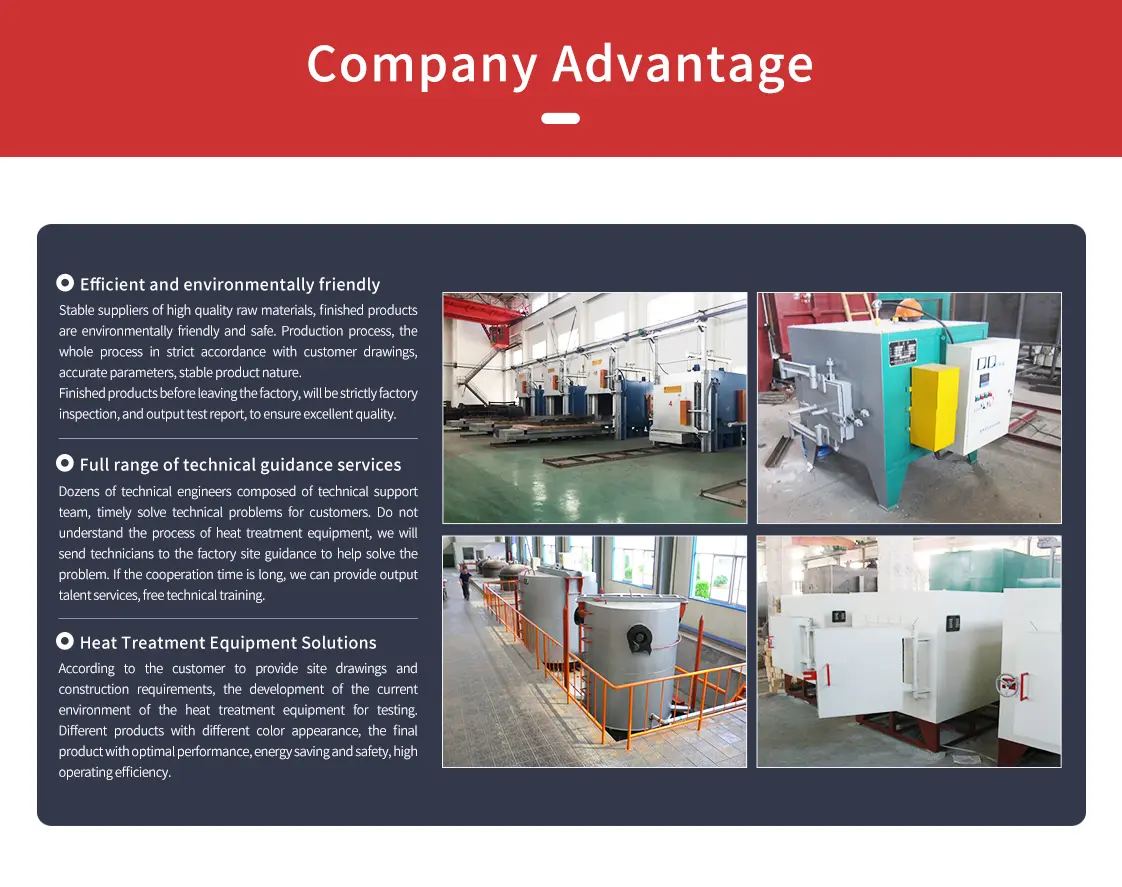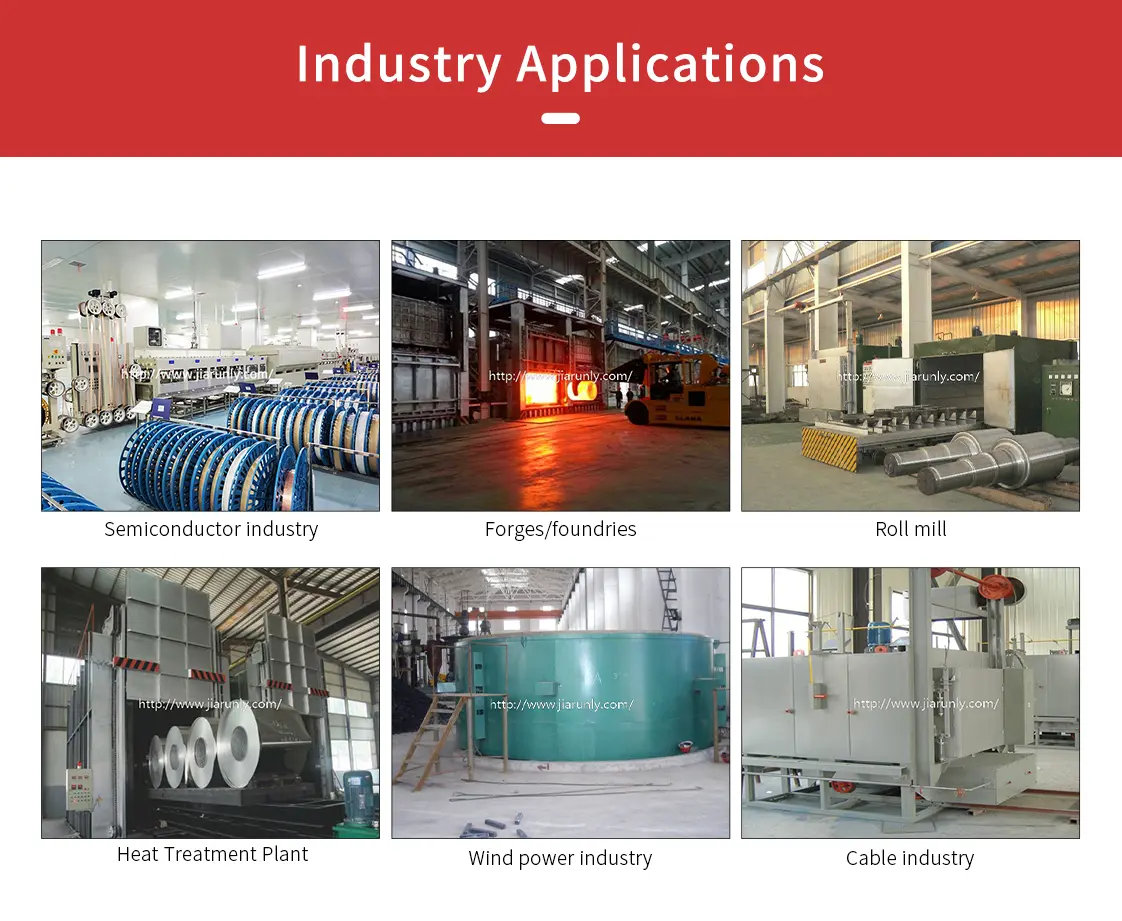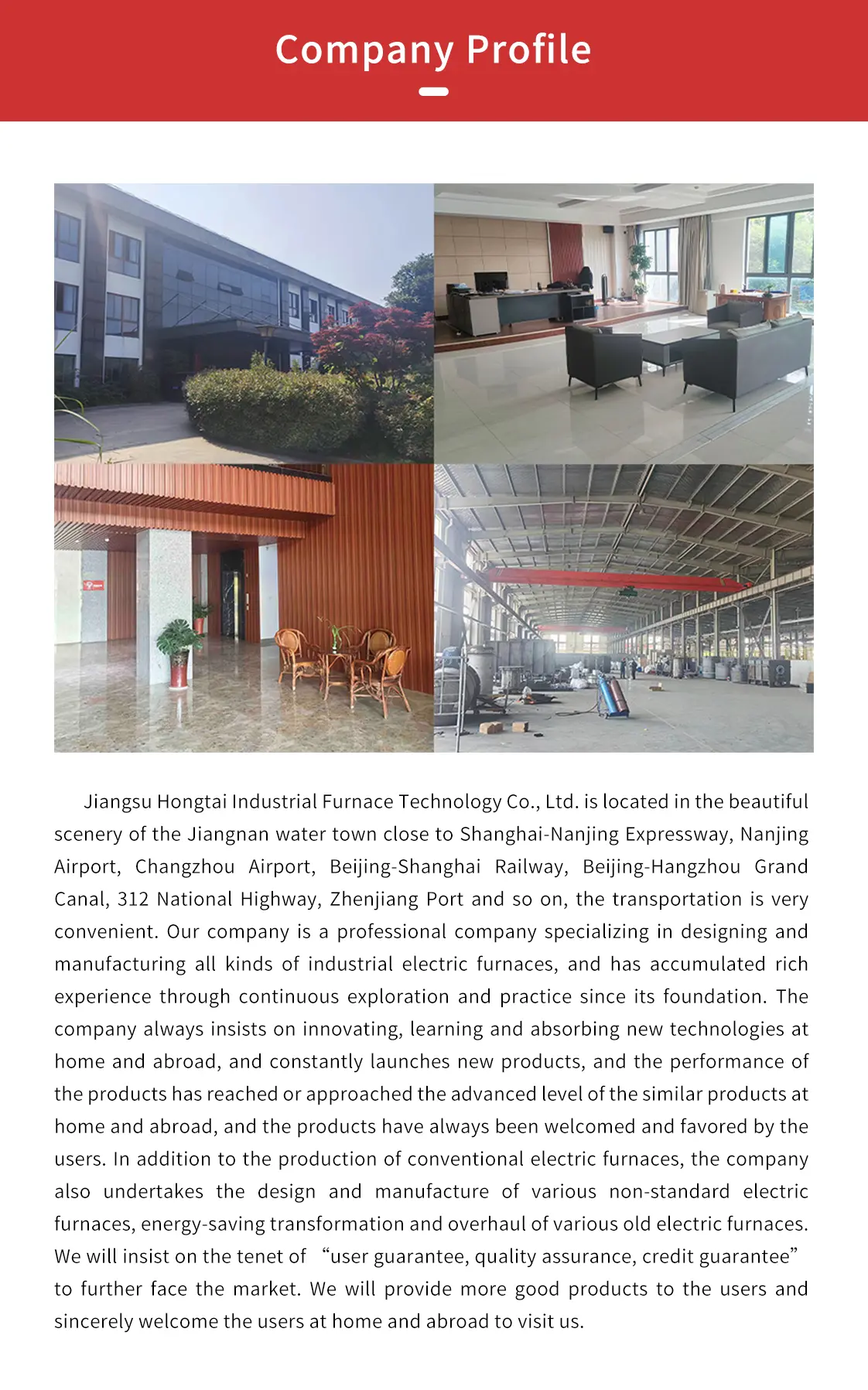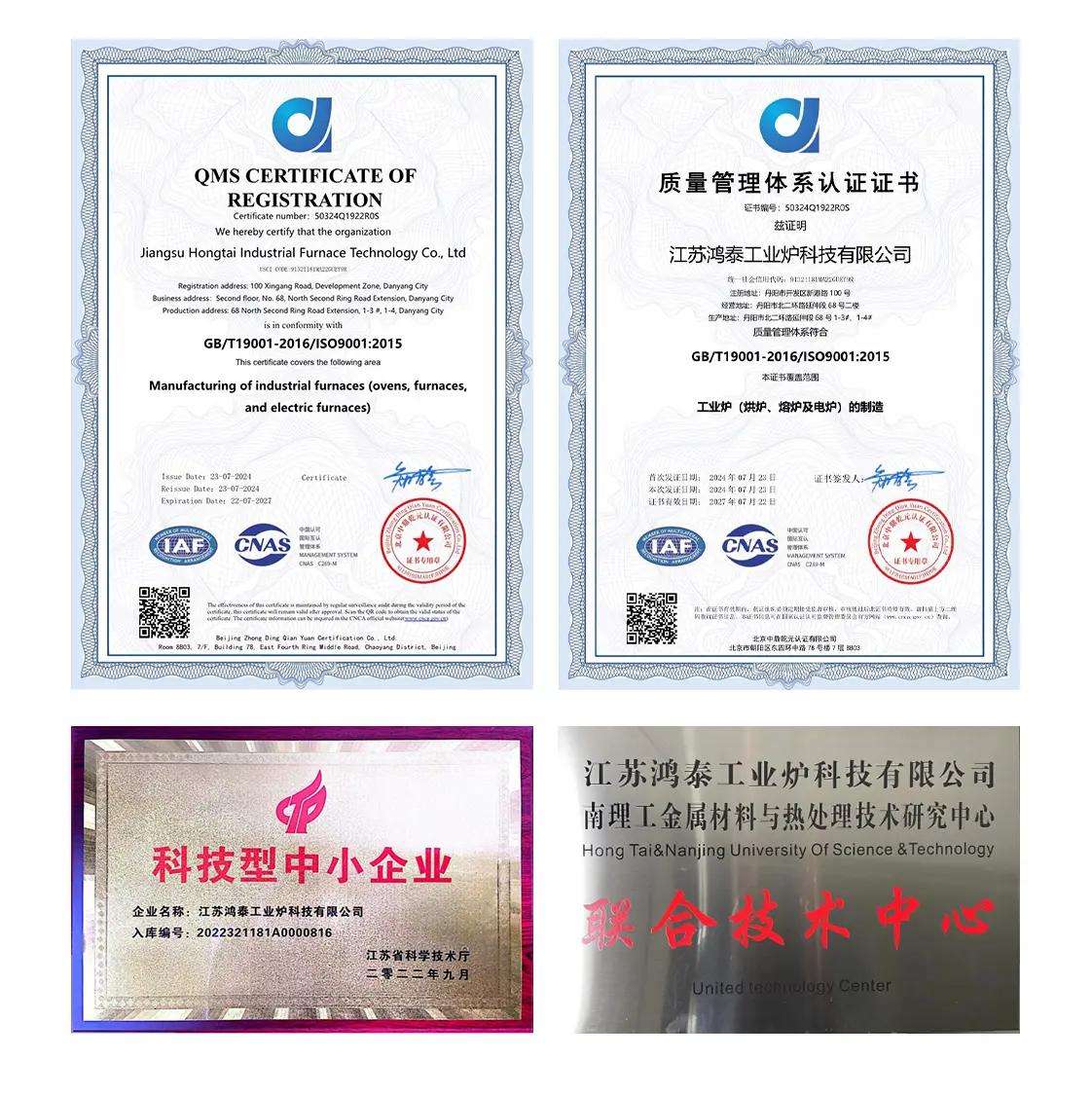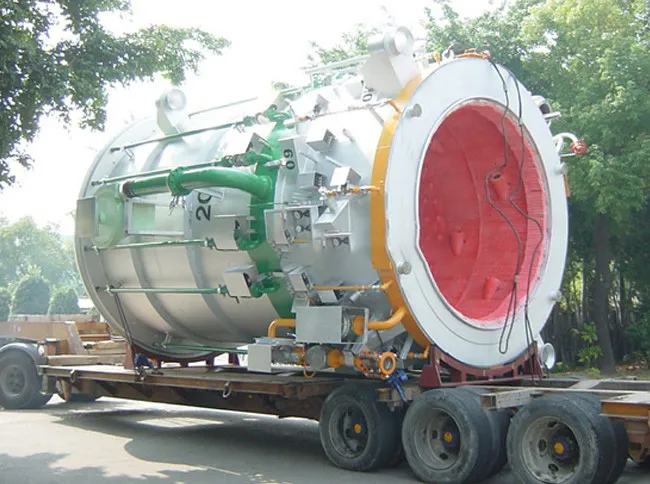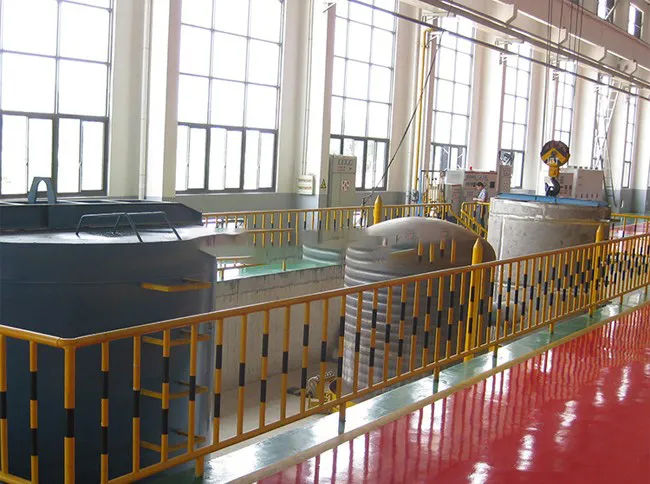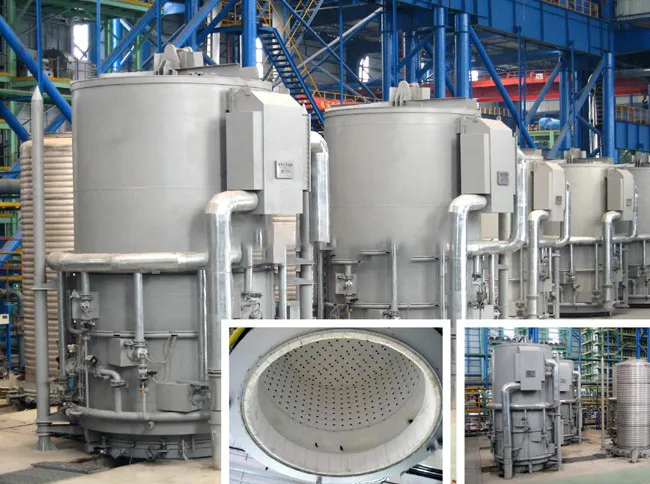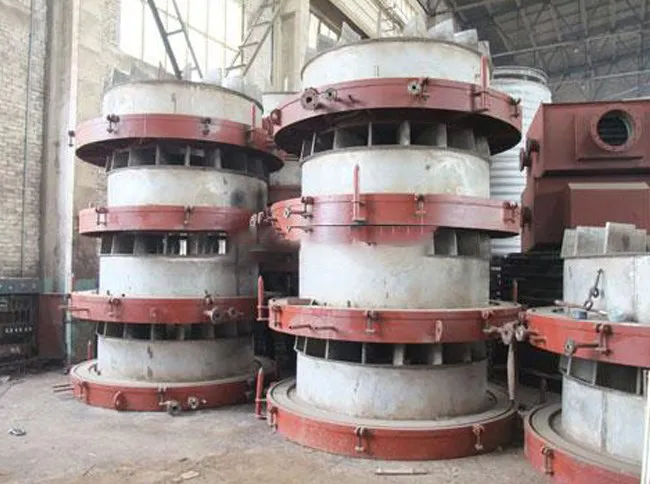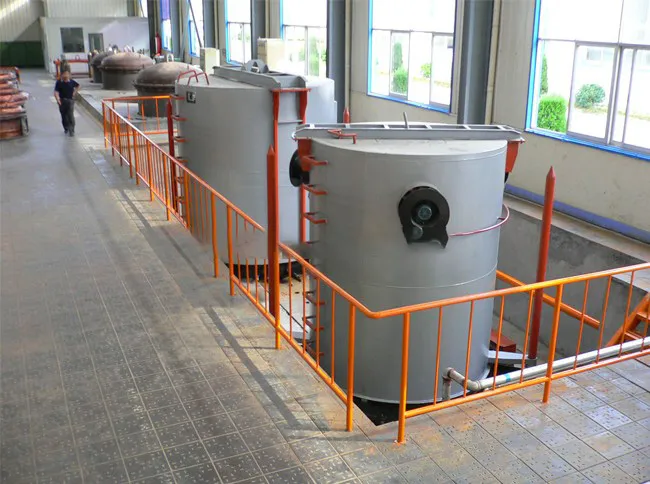- Vacuum furnace & oven
- Annealing Furnace & Oven
- Tempering furnace & oven
-
Carburizing furnace & Ovens
-
Bell Type Furnace
-
Pit Type Furnace & Well Type Furnace
-
Box Furnace & Chamber Furnace
-
Car Bottom Furnace & Bogie Hearth Furnace
-
Nitriding furnace & Ovens
-
Melting furnace & Ovens
- Quenching furnace & Ovens
-
Rapid quenching furnace & Ovens
- Forging furnace & Ovens
- Bright heat treatment furnace & Ovens
Hooded Annealing Furnace & Ovens
Heat treatment furnace manufacturer,Jiangsu Hongtai Industrial Furnace Technology Co., Ltd
Hood-type annealing furnace includes furnace table, inner hood, heating hood, cooling system, microcomputer high-precision automatic temperature control furnace. Hood-type annealing furnace is equipped with two hearths, two inner hoods, one heating hood.
Hooded Annealing Furnace & Ovens
Precision Annealing Solutions for Material Softening, Stress Relief, and Enhanced Workability
Product Introduction
Our Hooded Annealing Furnaces & Ovens are advanced industrial heat treatment systems designed for the precise annealing of metal components. Annealing is a crucial heat treatment process that involves heating a material to a specific temperature, holding it there for a period, and then slowly cooling it. The primary goals of annealing are to soften the material, relieve internal stresses, improve ductility, refine grain structure, and enhance machinability or cold workability. The hooded design, often combined with forced air circulation or controlled atmospheres, ensures excellent temperature uniformity throughout the workload, which is critical for achieving consistent and predictable material properties. These furnaces are ideal for a wide range of applications in industries such as automotive, aerospace, wire and rod manufacturing, and general metalworking, where specific material properties are required before further processing.
Core Advantages for Optimal Material Annealing
- Material Softening: Effectively reduces hardness and increases ductility, making materials easier to form, machine, or cold work.
- Stress Relieving: Relieves internal stresses induced during manufacturing processes like casting, forging, or welding, preventing cracking and distortion.
- Grain Structure Refinement: Promotes the formation of a more uniform and finer grain structure, enhancing mechanical properties and surface finish.
- Excellent Temperature Uniformity: Hooded design with forced air circulation or controlled atmospheres ensures uniform heat distribution throughout the load, critical for consistent results.
- Precise Temperature Control: Advanced control systems ensure accurate and stable temperature profiles, crucial for achieving desired metallurgical properties.
- Versatile Application: Suitable for annealing a wide range of ferrous and non-ferrous metals, accommodating various component sizes and geometries.
- Automated & Safe Operation: Integrated PLC control with comprehensive safety interlocks, real-time monitoring, and data logging for reliable and secure operation.
Technical Specifications
| Parameter | Unit | Range/Value | Notes |
|---|---|---|---|
| Maximum Working Temperature | °C | Up to 1100 | Depending on material and annealing type |
| Heating Method | - | Electric, Gas-fired | Selectable based on energy source availability |
| Atmosphere Control | - | Air, Inert Gas (N2, Ar), Hydrogen, Vacuum | For bright annealing or to prevent oxidation/decarburization |
| Rated Power/Fuel Consumption | KW / m³/h | Varies | Efficient heating systems |
| Working Chamber (W×H×L) | mm | Customizable | Available in various sizes and configurations |
| Temperature Uniformity | °C | ±5 (typical) | Ensures consistent annealing results |
| Control Accuracy | °C | ±1 | Advanced PID control |
| Cooling Method | - | Slow Furnace Cooling, Air Cooling | Controlled cooling rates for desired properties |
| Control System | - | PLC + Touchscreen HMI | Advanced automation and data logging |
| Safety Features | - | Over-temperature protection, Atmosphere monitoring, Emergency shutdown | Ensures safe operation |
Working Principle
Annealing is a heat treatment process that alters the microstructure of a material to change its mechanical or electrical properties. It typically involves heating the material to a specific temperature, holding it at that temperature for a certain period (soaking), and then slowly cooling it. The primary goals of annealing are to increase ductility, reduce hardness, relieve internal stresses, improve machinability, and refine the grain structure.
Hooded annealing furnaces are designed to provide excellent temperature uniformity and often operate with controlled atmospheres to prevent oxidation or decarburization of the material. The hooded design allows for easy loading and unloading of large or heavy batches. Components are placed on a hearth or fixture, and the hood is lowered to enclose the workload. Heating elements (electric or gas-fired) then raise the temperature of the chamber and its contents to the desired annealing temperature, which can vary significantly depending on the material and the specific type of annealing (e.g., full annealing, process annealing, spheroidizing annealing).
During the soaking period, atomic diffusion occurs, allowing the material's microstructure to transform. For example, in steel, this might involve recrystallization and grain growth, leading to a softer, more ductile state. After soaking, the material is cooled slowly, often within the furnace itself, to allow for further microstructural changes and to prevent the reintroduction of stresses. Forced air circulation systems are often employed to ensure uniform temperature distribution during both heating and cooling phases, especially for large or densely packed loads. The entire process is precisely controlled by advanced PLC systems, ensuring repeatable and high-quality results for various industrial applications.
Process Flow
Loading Components
Components are loaded onto the furnace hearth, and the hooded chamber is lowered and sealed.
Heating to Annealing Temperature
Furnace heats components uniformly to the precise annealing temperature, often under a controlled atmosphere.
Soaking Period
Components are held at the annealing temperature for a specified duration to allow microstructural transformation and stress relief.
Controlled Slow Cooling & Unloading
Components are slowly cooled (often within the furnace) to achieve desired properties, then unloaded.
Solving Customer Pain Points
Achieving Desired Material Softness & Ductility
Our annealing furnaces precisely control heating and cooling cycles to achieve optimal material softness and ductility, making subsequent forming or machining operations easier and more efficient.
Eliminating Internal Stresses & Preventing Cracking
Effective stress relief prevents distortion, cracking, and premature failure of components caused by residual stresses from prior manufacturing processes.
Ensuring Uniform Properties Across Large & Heavy Loads
The hooded design with excellent temperature uniformity ensures consistent annealing results throughout the entire batch, even for large or densely packed components.
Improving Machinability & Cold Workability
By refining grain structure and reducing hardness, our furnaces enhance the machinability and cold workability of materials, leading to reduced tool wear and improved production efficiency.
Preventing Oxidation & Decarburization with Controlled Atmospheres
Optional controlled atmosphere capabilities protect sensitive materials from surface degradation during high-temperature annealing, preserving material integrity and finish.
Process Repeatability & Quality Assurance
Advanced PLC control and data logging capabilities ensure consistent and repeatable annealing results, meeting stringent quality standards for critical components.
Customer Success Stories
A leading wire manufacturer significantly reduced wire breakage during drawing operations by 20% after implementing our hooded annealing furnace, attributing the improvement to enhanced ductility and uniform grain structure.
Customized Services
We offer comprehensive customization services for our hooded annealing furnaces, including tailored chamber dimensions, specific heating methods (electric or gas), and integration with various controlled atmosphere systems (N2, Ar, H2, Vacuum). Our engineering team works closely with clients to design solutions that precisely meet their unique material types, component sizes, desired mechanical properties, and production throughput requirements, ensuring optimal performance and seamless integration into their heat treatment processes.
Related Keywords
hooded annealing furnace, industrial annealing oven, heat treatment annealing, stress relieving furnace, material softening, precision heat treatment, metallurgical equipment, steel annealing, alloy annealing, controlled atmosphere annealing, bright annealing, batch annealing, spheroidizing annealing
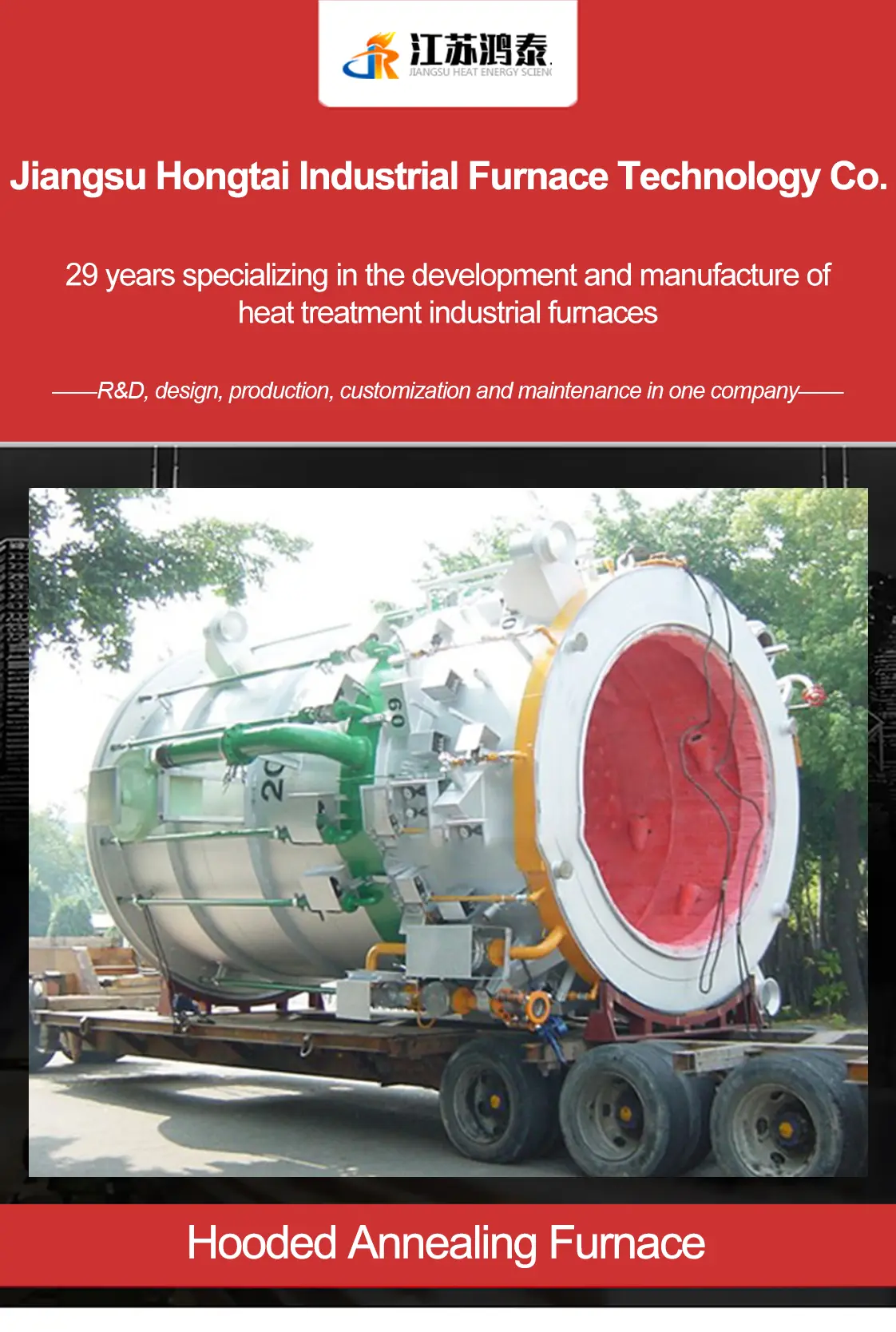
Industrial Value and Application Products
- Cold-Rolled Steel Strip: Used in automotive body panels, home appliances, and construction, requiring excellent formability and surface finish.
- Copper and Aluminum Coils: Used in electrical wiring, heat exchangers, and packaging, benefiting from improved ductility and conductivity.
- Wire Rods: Annealed for drawing into finer wires for various applications.
- Precision Tubes: Used in medical, automotive, and industrial applications, requiring specific mechanical properties and clean surfaces.
- Specialty Alloys: Annealing of various alloys for stress relief and property optimization.
Brief introduction:
Hood-type annealing furnace includes furnace table, inner hood, heating hood, cooling system, microcomputer high-precision automatic control of furnace temperature. Hooded annealing furnace is equipped with two hearths, two inner hoods, one heating hood. A cooling hood, a furnace in the heating temperature and insulation, the other furnace in the cooling discharge process, the heating hood alternately heating the two furnaces can save energy consumption, and realize continuous production.
Advantages:
1, the use of all-fiber furnace structure, with excellent energy-saving performance, than the same specifications of the brick resistance furnace energy saving 30%, warming speed increased by 1 times.
2、The furnace body is lightweight through the workshop traveling crane mechanism can be easily moved away from the furnace body, revealing the platform for loading and unloading materials.
3, using the top traveling crane to move away from the upper hood body, easy maintenance and repair of equipment, improve the life of the furnace.
4、Placement type electric furnace can be used alternately with more than one furnace base to improve productivity and save investment.
